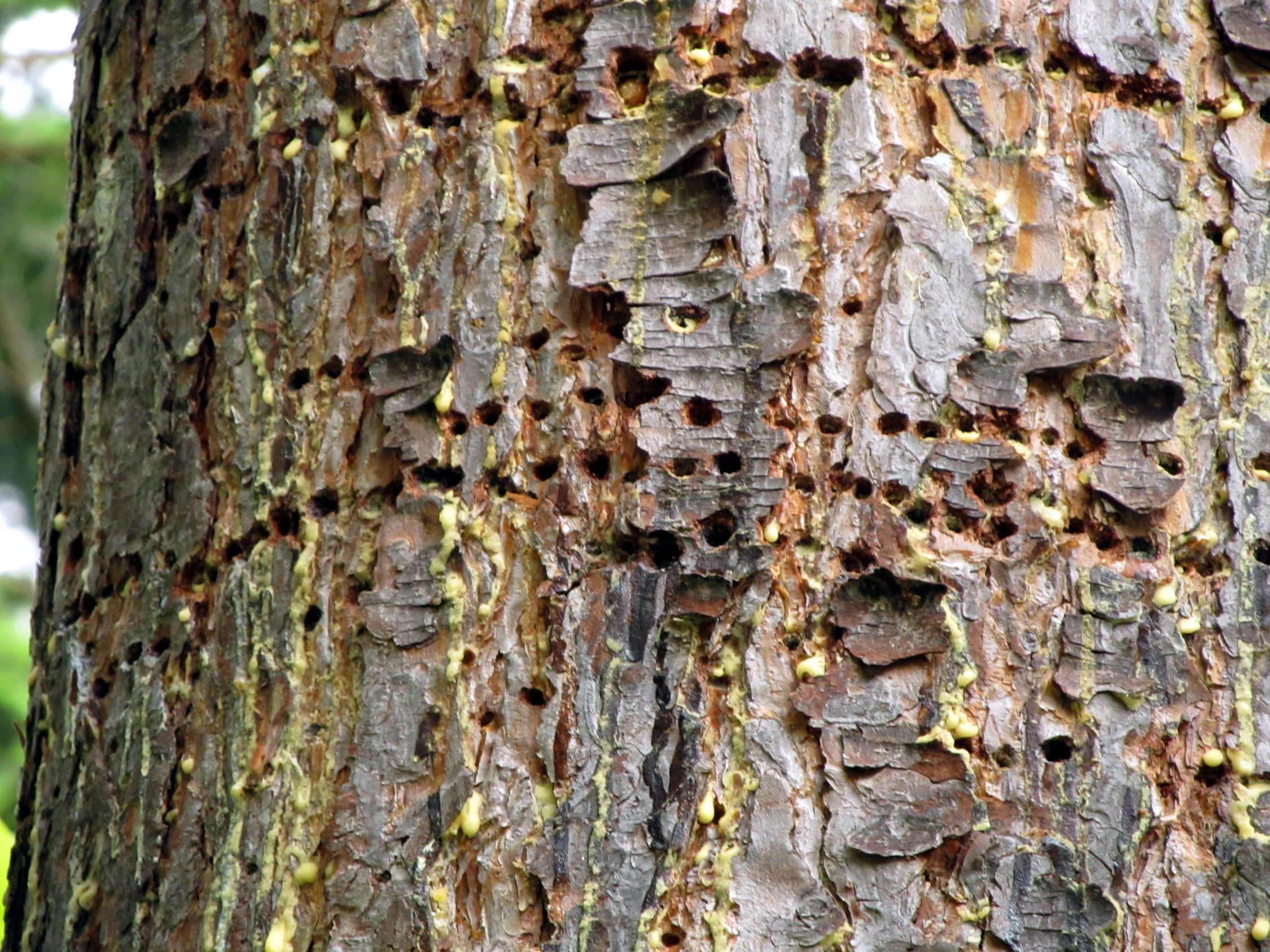Austrian pine trees are a popular ornamental tree in landscapes across North America. With their sturdy trunks and needles that remain green year-round, they provide great structure and color in the yard. However, Austrian pines can fall victim to boring insects that tunnel into the bark and woody tissues of the tree. Left unchecked, borer damage weakens trees and can eventually kill them. If your Austrian pine is showing signs of borer infestation, it is important to take action right away. In this comprehensive guide, we will cover how to identify borer problems on Austrian pines and provide effective solutions for eliminating borers and protecting tree health.
Identifying Borer Damage on Austrian Pines
The first step is learning how to spot the telltale signs of borer activity on your Austrian pine trees:
-
Holes in bark – Look for small, round holes bored into the bark, about the width of a pencil. Exit holes are a clear indication that borers have been present.
-
Frass – Sawdust-like debris, called frass, around holes or accumulating near the base of the trunk is a giveaway that borers are actively tunneling.
-
Resin bleeding – Clear, sap-like resin oozing from holes in the bark can signal borer damage. The tree produces resin in an attempt to expel or drown the invading insects.
-
Dead shoots – Borer larvae that tunnel into shoots can cause shoot tips to turn brown and die back.
-
Wilt – Leaves that are off-color, drooping, or wilting could indicate borer activity disrupting the flow of water and nutrients.
Thoroughly inspect the trunk and branches for these symptoms. Check areas where bark has cracked or fallen off as well. Quick detection gives you the best chance at saving your Austrian pine from excessive borer destruction.
Effective Ways to Get Rid of Borers on Austrian Pines
Once borers are confirmed on your Austrian pine, you can implement solutions to eliminate them and prevent further infestations:
Remove Infested Branches
Prune out branches showing clear signs of active borer damage. Make clean cuts at least 4-6 inches below exit holes or areas of frass. Destroy the cut branches immediately to prevent borers from spreading. Sterilize pruning tools before moving to unaffected areas of the tree.
Apply Insecticide Treatments
Use a targeted insecticide labeled for borer control on ornamental trees. Spray the trunk, branches, and surrounding soil according to instructions. Systemic insecticides that permeate plant tissues work best. Repeat applications may be required. Hire an arborist for large trees.
Employ Trunk Injections
For severe borer infestations in mature trees, trunk injections by a certified arborist can deliver insecticide directly into the transport tissues. This targets borers beneath the bark efficiently. However, infections may not be warranted in smaller, younger Austrian pines.
Maintain Vigor
Keep trees healthy with regular irrigation, fertilization, appropriate pruning, and mulching. Hardy, vigorous pines can resist and recover from borer attacks better. Proper cultural care also eliminates stresses that can make trees more susceptible.
Encourage Natural Predators
Predatory insects like parasitic wasps can provide natural borer control. Avoid broad-spectrum insecticides that would harm beneficials. Let predatory insects thrive by providing pollen and nectar sources.
Practice Preventive Measures
Once borers are eliminated, keep Austrian pines protected going forward:
- Inspect regularly for early signs of borers
- Plant borer-resistant trees like fir and spruce
- Prune out dead branches
- Fill bark cracks/wounds with caulk
- Maintain optimal growing conditions
- Apply preventive trunk sprays
By identifying borer infestations promptly and taking the appropriate control measures, you can protect your Austrian pine trees from major damage. Be vigilant in checking for symptoms and proactive in promoting tree health. With persistence and the right solutions, you can defeat borers and keep your landscape pines thriving beautifully.

k
How to Get Rid of Bark Beetles (4 Easy Steps)
FAQ
Can a tree with borers be saved?
What is the best remedy against borers?
What pesticide is used for pine borer?
Do borers attack pine trees?
Identification of the types of borers present will help to determine the best strategy to follow. Dendroctonus borers are the most aggressive borers in pines and attack and develop in all species of yellow pine, eastern white pine, and spruces. They initially attack the mid and lower trunk but the infestation spreads up and down the tree over time.
How do you get rid of Zimmerman pine moths?
These beetles can be controlled through sanitation activities in the winter and applications of insecticides to the tree trunk during the adult flight period. Zimmerman pine moths (Figure 5) are common pests of Austrian and Scotch pines and Norway spruce that can kill tree limbs and tree tops.
Do borers attack trees?
As a group, borers are most successful when they attack a tree that is stressed due to lack of water or that is planted under too much shade. When a borer attacks a vigorously growing conifer (like pine), the tree can physically pitch the borer out of the trunk in a flow of sap.
How do you get rid of borers on trees?
Removing these trees in late fall and winter removes the reproducing borers from the landscape before borers they can emerge to attack healthy trees. As an extra protective measure, insecticides can be applied on to the trunk to kill boring insects chewing into or out of the trees.
